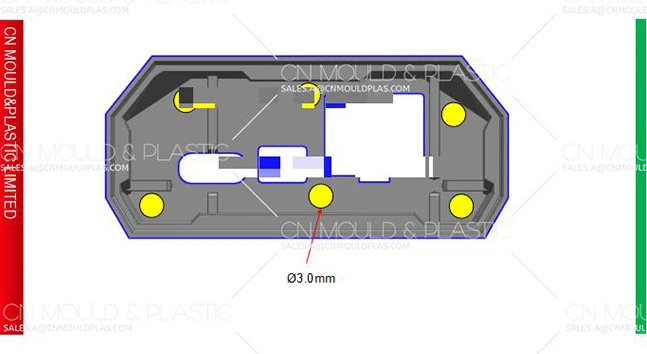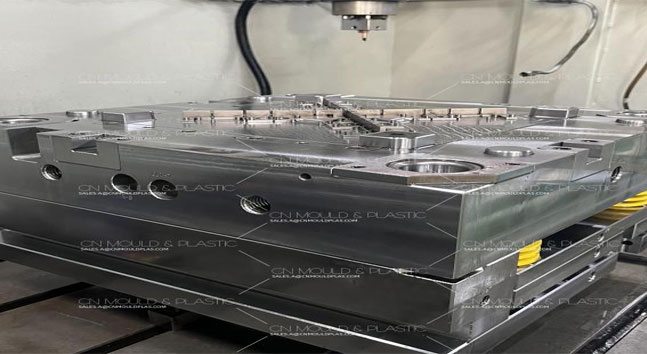In terms of chemical structure, TPU belongs to the (AB)n type block copolymer. The soft segments are usually composed of polyester or polyether chains. Commonly used materials include polyester polyols, polyether polyols, polycarbonate diols, polysiloxane diols, as well as polycaprolactone (PCL) with hydroxyl groups at both ends, polylactic acid (PLLA), hydroxyl-terminated polybutadiene (HTPB), etc. The hard segments of polyurethane include the urethane groups and chain extenders in the molecular chain. Common components are various diisocyanates and polyureas. Due to the wide variety of monomers that make up the soft and hard segments, TPU with various properties and applications, with hardness ranging from 75 - 97A and 50 - 80D, can be synthesized. It can be made into high-modulus engineering plastics, highly elastic rubbers, films, and fibers, which is unique among all thermoplastic elastomers (TPE). Therefore, TPU is often regarded as a versatile TPE that spans general-purpose and engineering applications, enabling multiple processing techniques and diverse uses.
Since the hard segments of TPU are incompatible with the soft segments in terms of polarity and interfacial properties, TPU readily forms a microphase-separated structure. The hard segments, usually highly polar, tend to form hydrogen bonds with each other. Additionally, the crystallization of hard segments also contributes to phase separation. The microdomain structure resulting from phase separation is the fundamental reason for TPU's thermoplastic elastomer properties. Generally, the soft segments form a continuous phase, endowing TPU with elasticity, while the hard segments act as physical cross-linking points and reinforcing fillers. When heated to the melting point or dissolved by solvents, these physical cross-linking points disappear, allowing processing through thermoplastic techniques or formation of homogeneous solutions. Upon cooling or solvent evaporation, the soft and hard segments re-separate to form a cross-linked network, restoring the elasticity.

TPU can be classified according to different criteria:
1. Based on soft segment structure: It is mainly divided into polyester-based and polyether-based types, which contain ester, ether, and butenyl groups respectively.
2. Based on hard segment structure: It is classified into urethane-based and urethane-urea-based types, obtained by chain extension with diols or diamines, respectively.
3. Based on synthesis process: It is divided into bulk polymerization and solution polymerization. Bulk polymerization can be further divided into prepolymerization and one-step methods based on the presence or absence of a pre-reaction. In the prepolymerization method, diisocyanates react with macroglycols for a certain period before adding chain extenders to form TPU. In the one-step method, diisocyanates, macroglycols, and chain extenders react simultaneously to produce TPU. In solution polymerization, diisocyanates are first dissolved in a solvent, followed by the addition of macroglycols for a reaction, and finally, chain extenders are added to form TPU.
4. Based on product applications: It can be categorized into special-shaped parts (various mechanical components), pipes (sheaths, profiles), films (sheets, plates), as well as adhesives, coatings, and fibers.
(1) Mechanical Properties
TPU exhibits excellent physical and mechanical properties, such as high tensile strength and elongation at break. The ratio of soft to hard segments in TPU can be adjusted over a wide range, resulting in a broad hardness range from Shore A 60 to Shore D 80, and maintaining high elasticity across this entire range. Different hardness levels correspond to varying tensile strengths, ranging from 20 MPa to 70 MPa. TPU's most outstanding property is its abrasion resistance, making it a common choice for manufacturing shoe soles and cable sheaths. It also features excellent tear resistance and a low long-term compression set.
The thermomechanical properties of TPU fundamentally differ from those of chemically cross-linked polyurethanes. When stressed, TPU undergoes orientation, disrupting existing hydrogen bonds and forming new ones in suitable positions. This mechanism endows TPU with high tensile strength, tear strength, elongation, and low permanent deformation.
TPU contains no plasticizers and can be laminated with other materials such as ABS and polycarbonate. Many commercial TPUs are polyester-based, which generally outperform polyether-based TPUs in abrasion resistance, tear resistance, and tensile/tear strength. Polyether-ester-based TPUs synthesized through special methods exhibit even more superior properties, combining the advantages of both polyether-based and polyester-based TPUs, and are suitable for manufacturing fire hoses, cable sheaths, films, etc.
(2) Thermal Properties
TPU can be used within a wide temperature range. Most products can be used continuously at -40℃ to 80℃ and temporarily withstand up to 120℃. The soft segments in TPU's molecular chain determine its low-temperature performance. Polyester-based TPUs generally have poorer low-temperature flexibility compared to polyether-based TPUs. The low-temperature performance of TPU depends on the glass transition start temperature and softening temperature of the soft segments. The glass transition range is influenced by the hard segment content and the degree of phase separation between soft and hard segments. As the hard segment content increases and the phase separation degree decreases, the glass transition range of the soft segments broadens, deteriorating the low-temperature performance. Using polyethers with poor compatibility with hard segments as soft segments can enhance TPU's low-temperature flexibility. Increasing the molecular weight of soft segments or annealing TPU can also increase the incompatibility between soft and hard segments. At high temperatures, the hard segments mainly maintain TPU's properties; moreover, higher product hardness corresponds to a higher service temperature. Besides the amount of chain extenders, the type of chain extenders also affects high-temperature performance. For example, TPU synthesized with 1,4-bis(2-hydroxyethoxy)benzene as a chain extender has a higher service temperature than those using 1,4-butanediol or 1,6-hexanediol. The type of diisocyanate also impacts TPU's high-temperature properties, as TPUs with different diisocyanates and chain extenders in their hard segments exhibit varying melting points.
(3) Water Resistance
At room temperature, TPU can be used in pure water for several years with minimal performance degradation. However, at 80℃, even a few weeks of immersion significantly impairs its mechanical properties. TPU's hydrolytic stability is related to the structure of the soft segments. Protecting polyester-based TPUs with carbodiimide improves their hydrolytic resistance. Polyether-ester-based and polyether-based TPUs generally show better hydrolytic resistance than polyester-based TPUs at high temperatures. As TPU's hardness increases, its hydrolytic stability improves due to the hydrophobic nature of the hard segments.
(4) Oil and Solvent Resistance
TPU demonstrates excellent resistance to oils (such as mineral oil, diesel, lubricating oil). Non-polar solvents like hexane, heptane, and paraffin oil have little effect on polar polyurethanes, and even at high temperatures, the swelling of TPU in non-polar solvents remains minimal. In contrast, TPU swells severely in chlorinated hydrocarbons and aromatic hydrocarbons (such as toluene), with the degree of swelling depending on its structure. Polyester-based TPUs swell less than polyether-based ones, and hard TPUs swell less than soft ones. Some polar solvents like tetrahydrofuran, methyl ethyl ketone, or N,N-dimethylformamide can partially or completely dissolve TPU. For instance, soft thermoplastic polyurethanes can dissolve in a methyl ethyl ketone/acetone mixture and be used as adhesives.
(5) UV and Microbial Resistance
TPUs prepared from aromatic isocyanates may yellow under UV light, but the impact on performance is minimal. Adding UV absorbers can mitigate this yellowing. Soft polyester-based TPUs may be eroded by microorganisms when in prolonged contact with moist soil, while soft or hard polyether-based TPUs, polyether-ester-based TPUs, and hard polyester-based TPUs are generally resistant to microbial attack.

